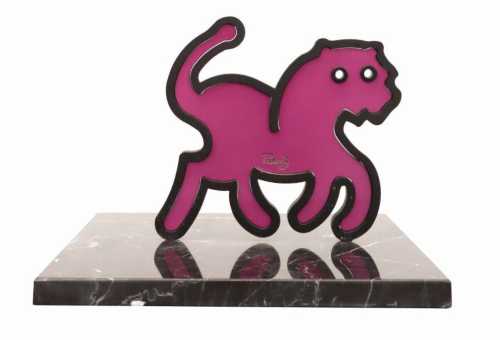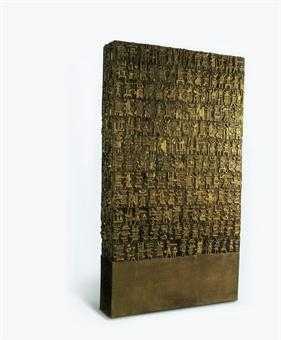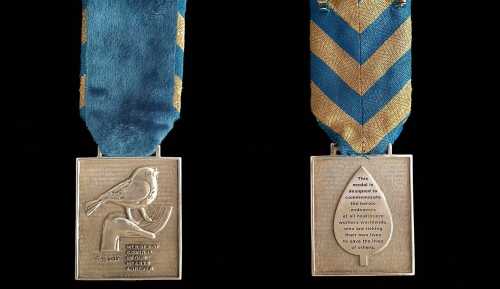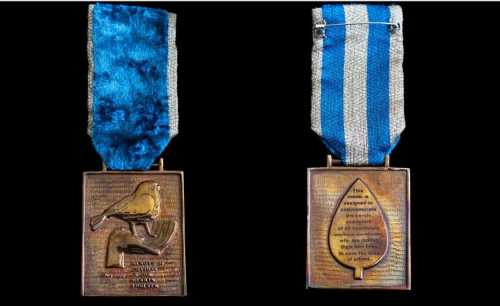- The Wall (Oh, Persepolis) 1975
- Bronze
- Sculpture
- 102 * 23 * 181 cm
- Editions: 1
- Edition No. 1
- signed and dated 'Parviz 1975' (lower left)
Artwork Description
Parviz Tanavoli is considered as one of the pioneers of the Saqqa-khane school, a neo-traditionalist movement that emerged in the 1960s which counted among its proponents a number of leading Iranian modern artists, including Charles Hossein Zenderoudi and Faramarz Pilaram.
Much of Tanavoli's inspiration derives from Persian culture crystallized in myths and legends, epic poems, carpets and rugs, bas-reliefs of Persepolis, and ancient iron and bronze pieces. He succeeded in creating a distinctly Iranian visual language which maintained its relevance in modern times. His works often demonstrate an interplay between philosophy and playfulness, between intense seriousness and occasional absurdity.
Tanavoli often relates his sculptures to poetry, and works mainly in cast bronze. The main themes in his repertoire are Poets, Prophets, Lovers, animals including Lions, and objects like Locks, Cages, and most notably the Walls, which includes his larges and most impressive pieces.
A monumental series of bronzes, the Walls of Iran, represents the sculptor's greatest and most mature achievement. The surfaces of these walls are modelled after Egyptian or Sumerian reliefs, which were articulated with intricate inscriptions or pictograms.
Even his miniature pieces have often had the capacity to suggest monumental scale, however, the bronze Walls of Iran Tanavoli are, quite literally, monuments. Walls, universal structures with inherently plastic values, are richly ornamented with scripts that echoes the elaborate calligraphy of the mosque, but here, on closer examination, it is revealed to be a universal script, reminscent of Cuniform, Armenian, Aramaic and Persian. Thus the artist's own mystic sense transforms his literal source into messages of universal resonance.
The most refined and simplified of the Wall series is perhaps the present work, Oh Persepolis, which alludes to minimalist works by Tanavoli's American contemporaries, and is covered by a calligraphic surface on a mural scale. Walls, naturally barriers and deterrents, become in the hands of Parviz Tanavoli the symbols of evolution and refinement.
Works from The Wall series can be found in several important collections inlcuding the Museum of Modern Art, Vienna; the Ludwig Museum, Aachen, Germany; The Grey Art Gallery, New York University, the City of Isfahan, and the City of Tehran
Parviz Tanavoli was the representative of Iran at the 29th Venice Biennale in 1958.
Much of Tanavoli's inspiration derives from Persian culture crystallized in myths and legends, epic poems, carpets and rugs, bas-reliefs of Persepolis, and ancient iron and bronze pieces. He succeeded in creating a distinctly Iranian visual language which maintained its relevance in modern times. His works often demonstrate an interplay between philosophy and playfulness, between intense seriousness and occasional absurdity.
Tanavoli often relates his sculptures to poetry, and works mainly in cast bronze. The main themes in his repertoire are Poets, Prophets, Lovers, animals including Lions, and objects like Locks, Cages, and most notably the Walls, which includes his larges and most impressive pieces.
A monumental series of bronzes, the Walls of Iran, represents the sculptor's greatest and most mature achievement. The surfaces of these walls are modelled after Egyptian or Sumerian reliefs, which were articulated with intricate inscriptions or pictograms.
Even his miniature pieces have often had the capacity to suggest monumental scale, however, the bronze Walls of Iran Tanavoli are, quite literally, monuments. Walls, universal structures with inherently plastic values, are richly ornamented with scripts that echoes the elaborate calligraphy of the mosque, but here, on closer examination, it is revealed to be a universal script, reminscent of Cuniform, Armenian, Aramaic and Persian. Thus the artist's own mystic sense transforms his literal source into messages of universal resonance.
The most refined and simplified of the Wall series is perhaps the present work, Oh Persepolis, which alludes to minimalist works by Tanavoli's American contemporaries, and is covered by a calligraphic surface on a mural scale. Walls, naturally barriers and deterrents, become in the hands of Parviz Tanavoli the symbols of evolution and refinement.
Works from The Wall series can be found in several important collections inlcuding the Museum of Modern Art, Vienna; the Ludwig Museum, Aachen, Germany; The Grey Art Gallery, New York University, the City of Isfahan, and the City of Tehran
Parviz Tanavoli was the representative of Iran at the 29th Venice Biennale in 1958.
More lots by Parviz Tanavoli

Untitled
Estimation
1,500,000,000﷼
2,481 USD
-
2,000,000,000﷼
3,309 USD
Realized Price
1,400,000,000﷼
2,316 USD
20%
Sell at
Sale Date
Smart Auction
-
2 August 2024
Realized Price
128,001 USD
Min Estimate
68,579 USD
Max Estimate
96,026 USD
Average Artwork Worth
+74.318%
Average Growth of Artwork Worth
Sales Performance Against Estimates
Average & Median Sold Lot Value
2021 - 2025
Performance vs. Estimate
2021 - 2025
Sell-through Rate
2021 - 2025


